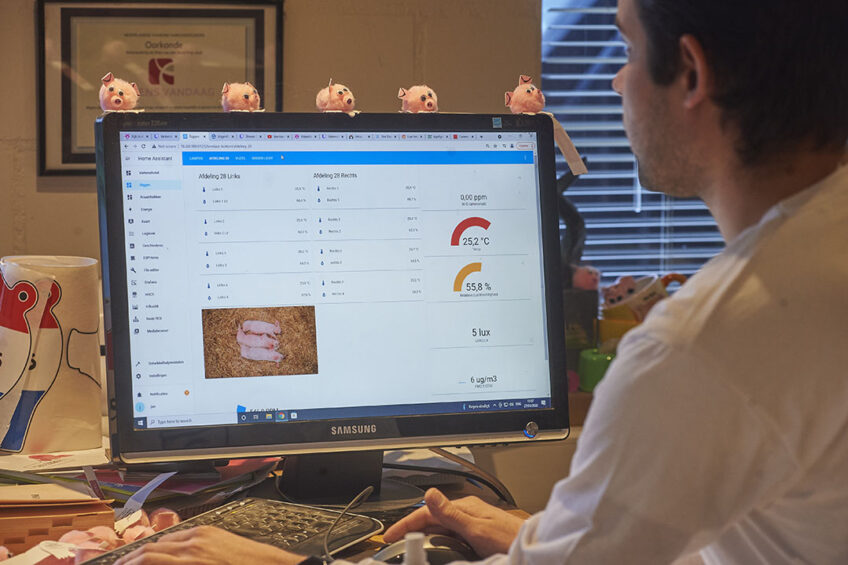How can data help smart decision-making in the pig industry?

The growing world population has increased the demand for pork products. It has also led to a rapid growth of swine enterprises. As a result of swine production intensification, the pig industry is increasingly investigating the potential of decision making driven by data to improve production systems.
Data analysis and machine learning techniques are implemented to predict variables and to make on-farm smart decisions using the information gathered at the farm and across the supply chain. Therefore, structured data availability and accessibility are important for data analysis and machine learning performance.
Machine learning
Machine learning is a branch of artificial intelligence which includes the application of deep learning and neural networks. It models mainly include algorithms of a decision tree, clustering, a support vector machine, and the Markov chain model focused on optimiSing feed efficiency and energy intake, disease detection, behaviour tracking and recognition for postural classification, sound detection, health monitoring, and modeling, prediction, and management of swine farming.
Data analysis in the pig industry
Complementary to the physical parameter measurement is data analysis. A variety of statistical, mathematical, and analytical methods can be used to extract information from collected data. These techniques can be applied or developed based on the available theories for a particular application.
Developing a machine learning and data processing algorithm is the key to understanding and implementation of the experimental data
Algorithm development
Developing a machine learning and data processing algorithm is the key to understanding and implementation of the experimental data. For a successful algorithm development, one must have a comprehensive understanding of data type (such as animals sound/voice, body posture, etc.) and data trends such as changes over the time (time-domain) or changes over the range of frequencies (frequency-domain).
Next in any algorithm is the evaluation of data based on “features”. Good features are the backbone of any machine learning and data processing algorithm. Appropriate feature creation and extraction often needs domain knowledge, creativity, and lots of time. Next essential step includes creation of the algorithm modules and modeling. After creating algorithm model comes the algorithm experimentation and validation.
Studies
In 2020, Siroj Bakoev and colleagues from L.K. Ernst federal science center for animal husbandry, in Moscow, Russia demonstrated the utility and relative ease of using machine learning algorithms to assess the state of limbs in pigs based on growth rate and meat characteristics.
Baocai Xu and colleagues from Jiangsu Yurun Food Industry Group Co., Ltd, in Nanjing, China proposed a pork traceability framework in 2013. They based it on Internet of Things monitoring and data mining techniques.
Ruirui Liang and colleagues from School of Life Sciences at Shanghai University, China predicted African swine fever outbreaks in 2020. They used outbreak data and meteorological data to assist decision-makers to take measures to prevent the further spread of future epidemics.
In 2022, Xingdong Zhou and colleagues from the Key Laboratory of Applied Technology on Green-Eco-Healthy Animal Husbandry in Zhejiang, China evaluated the relationship between different productive factors and piglets weaned per sow per year and analysed the impact of the changes in different factors on piglets weaned per sow per year using 9 different algorithm models based on machine learning.
Data analysis in the pig industry
Data gathered from various sources in the supply chain include inaccuracies and inconsistencies, also known as noise. Therefore, data analysis compatible for smart decision-making needs large and high-quality dataset conforming to a common standard. Furthermore, data preparation is the most time-intensive task in data analysis with machine learning. In addition, certain data need to be collected from all related sources and locations such as farm and slaughterhouse, to achieve the desired objective of data analysis. Moreover, data needs to be visualised in meaningful and easy-to-understand ways, to increase the social acceptance of on-farm technology implementation and to create a more sustainable and controlled swine production system.
Concluding remarks
Smart decision-making using data collection, data analysis and machine learning assists farmers to monitor individual pigs. It also improves swine welfare, amends management systems, and enhances farm productivity and profitability. However, it requires further research to overcome challenges. These are inaccuracies and inconsistencies in collected data, and standard data preparation and visualisation to improve smart decision-making in swine industry.







